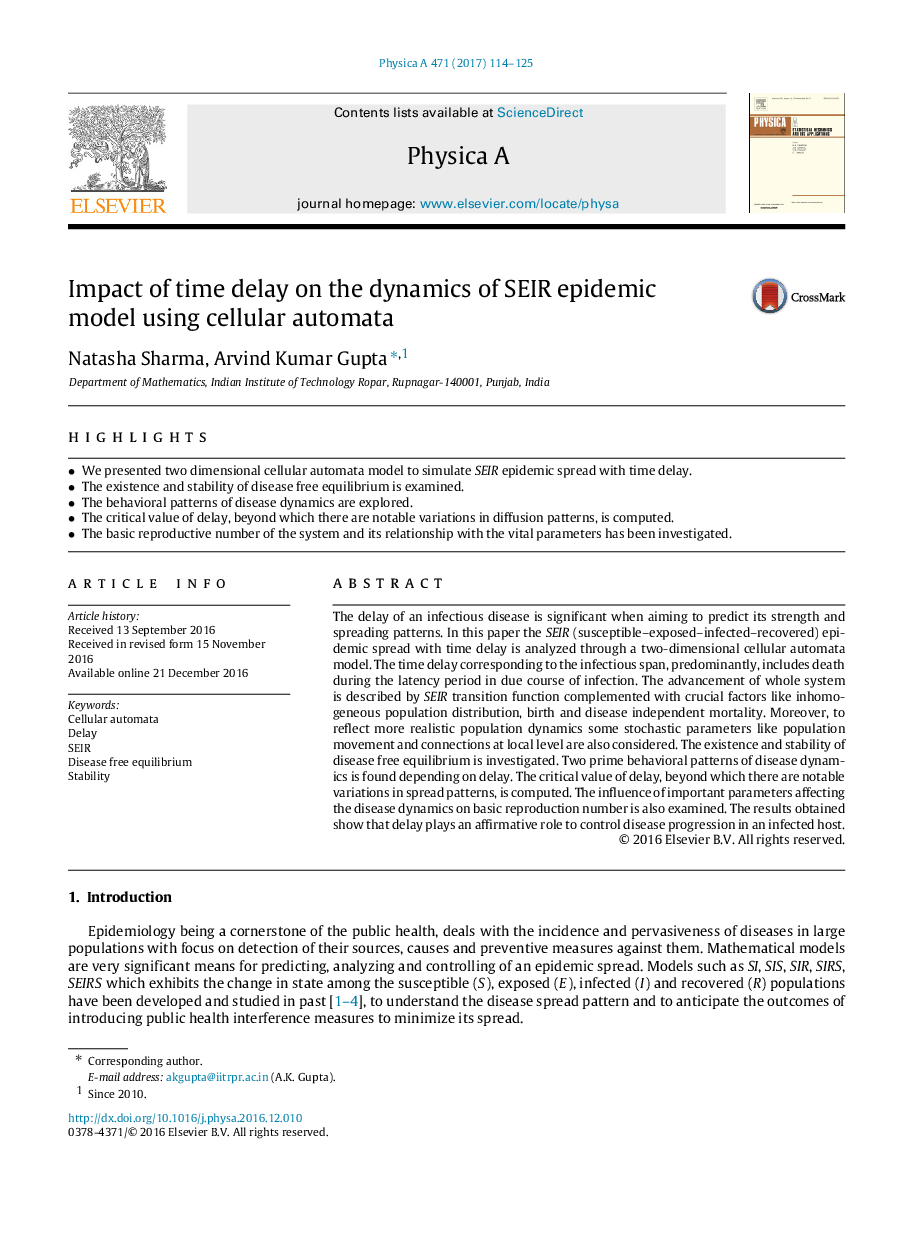| Article ID | Journal | Published Year | Pages | File Type |
|---|---|---|---|---|
| 5102906 | Physica A: Statistical Mechanics and its Applications | 2017 | 12 Pages |
Abstract
The delay of an infectious disease is significant when aiming to predict its strength and spreading patterns. In this paper the SEIR â(susceptible-exposed-infected-recovered) epidemic spread with time delay is analyzed through a two-dimensional cellular automata model. The time delay corresponding to the infectious span, predominantly, includes death during the latency period in due course of infection. The advancement of whole system is described by SEIR transition function complemented with crucial factors like inhomogeneous population distribution, birth and disease independent mortality. Moreover, to reflect more realistic population dynamics some stochastic parameters like population movement and connections at local level are also considered. The existence and stability of disease free equilibrium is investigated. Two prime behavioral patterns of disease dynamics is found depending on delay. The critical value of delay, beyond which there are notable variations in spread patterns, is computed. The influence of important parameters affecting the disease dynamics on basic reproduction number is also examined. The results obtained show that delay plays an affirmative role to control disease progression in an infected host.
Related Topics
Physical Sciences and Engineering
Mathematics
Mathematical Physics
Authors
Natasha Sharma, Arvind Kumar Gupta,
